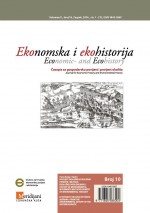CONFLICT AND CONSENSUS REGARDING RESOURCE
POLICIES IN A BORDERLAND OF THE HABSBURG EMPIRE: PERSPECTIVES ON AND PERCEPTIONS OF FORESTS AND THE ENVIRONMENT IN TRANSYLVANIA AT THE END OF EIGHTEENTH CENTURY AND IN THE NINETEEN-CENTURY
CONFLICT AND CONSENSUS REGARDING RESOURCE
POLICIES IN A BORDERLAND OF THE HABSBURG EMPIRE: PERSPECTIVES ON AND PERCEPTIONS OF FORESTS AND THE ENVIRONMENT IN TRANSYLVANIA AT THE END OF EIGHTEENTH CENTURY AND IN THE NINETEEN-CENTURY
Author(s): Dorin-Ioan RusSubject(s): Human Ecology, Environmental interactions, 18th Century, 19th Century
Published by: Društvo za hrvatsku ekonomsku povijest i ekohistoriju - Izdavačka kuća Meridijani
Keywords: Forests History; Transylvania; Eighteenth Century; Nineteenth Century;
Summary/Abstract: In general, conflicts between the official-scientific and traditional knowledge were generated by unfamiliarity with resources, lack of forestry education and illiteracy. Traditional knowledge is more typical of the rural Romanian population, while Saxons and Hungarians proved more receptive to innovations and ready to adapt to new realities. From a historical perspective, the research can provide new examples of the management, surveillance, conservation as well as the rational exploitation of forest resources by means of juridical measures and their application in forestry; it can critically analyze these measures and propose the adaptation of certain solutions to the changing requirements of contemporary life; it can follow the geographical extent of these measures in other parts of Europe from a diachronic perspective, by analyzing the jurisdiction of forest ranges in the Habsburg Empire. The research findings can progressively and regressively indicate the way in which the centrally-imposed forest management measures influenced the periphery in terms of monitoring the exploitation of forest resources and ensuring the conservation of forests through direct and indirect measures.
Journal: Ekonomska i ekohistorija - Časopis za gospodarsku povijest i povijest okoliša
- Issue Year: 2014
- Issue No: 10
- Page Range: 233-245
- Page Count: 13
- Language: English

